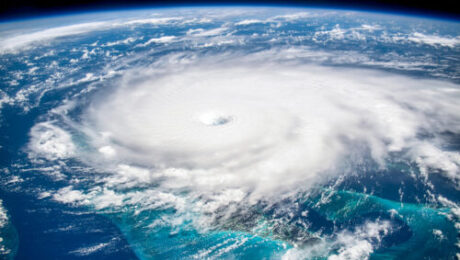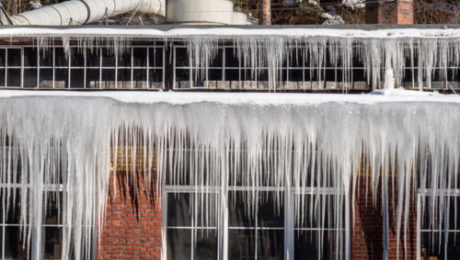Vehicle Thefts Surpassed 1 Million in 2022
This article is from RISQ Consulting’s Zywave client portal, a resource available to all RISQ Consulting clients. Please contact your Benefits Consultant or Account Executive for more information or for help setting up your own login.

Vehicle thefts nationwide surpassed 1 million last year. This was a 7% increase over 2021 numbers and the first time thefts reached that total since 2008, according to a new analysis from the National Insurance Crime Bureau (NICB).
“We are seeing vehicle theft numbers that we haven’t seen in nearly 15 years, and there is very little deterrent to stop criminals from committing these acts,” David Glawe, president and chief executive of NICB, said in a statement. “We must reinvest in local law enforcement, provide the necessary resources for prosecution and community policing programs and implement early intervention programs given the high incidence of juvenile offenders involved in vehicle thefts.”
Law enforcement agencies and communities reported over 250,000 thefts in the fourth quarter of 2022. California and Texas led the nation last year with the most reported stolen vehicles at roughly 202,700 and 105,000, respectively. Among the 10 states with the most vehicle thefts, Illinois (sixth-highest overall) had the most significant year-over-year increase of 35%. Following that was Washington (third-highest overall), with an increase of 31% from 2021.
The remaining states in the top 10 were Florida, Colorado, Ohio, Missouri, New York and Georgia. NICB used data from the National Crime Information Center to conduct its analysis.
Thefts of Kia and Hyundai vehicles spiked in recent years. In September, the Highway Loss Data Institute (HLDI) called Hyundai and Kia vehicles “easy targets” since many 2015 to 2019 model-year vehicles lack electronic immobilizers.
Electronic immobilizers prevent thieves from simply breaking into a vehicle and bypassing the ignition. Immobilizers were standard on 96% of other manufacturers’ vehicles in 2015 but standard on only 26% of Hyundai and Kia models, according to IIHS.
Some insurers, including Progressive and State Farm, started refusing to write policies for Hyundai and Kia models in certain cities. Michigan’s Department of Insurance and Financial Services (DIFS) issued a bulletin reminding insurers the state requires they offer auto insurance to all residents regardless of make or model—including Kia and Hyundai vehicles.
“In other states, some insurers have attempted to deny or limit auto coverage for [Kia and Hyundai vehicles],” Anita Fox, director of Michigan’s DIFS, said in a statement. “Our new bulletin clearly states that such actions are prohibited in Michigan. DIFS will continue to ensure that every eligible Michigan driver can get the auto insurance they need to legally drive on Michigan roads.”
Insurers can respond to the “indisputably” increased risk of Kia and Hyundai thefts by charging more for comprehensive coverage or choosing not to insure them, Robert Passmore, department vice president of personal lines at the American Property Casualty Insurance Association (APCIA), said.
“That said, any action that insurer would take would have to be in accordance with state law,” Passmore said in a written statement. States have rules about rate filing, canceling, and non-renewals. Also, some states have “take all comers” requirements prohibiting insurers from denying coverage based on vehicle make and model.
Kia and Hyundai have software fixes and other anti-theft devices available to drivers. Vehicle owners should contact their local dealer for more information. And, when shopping for insurance, be sure to let the insurer know if their vehicle has had the software upgrade.
Last year’s roughly 1.02 million stolen vehicles were just under 2008’s total of 1.05 million. NICB noted that law enforcement may still report thefts from 2022, meaning the numbers may change.
NICB recommends that vehicle owners follow good security practices and that their auto insurance policies are current. Owners should roll up their windows, lock their car doors, park personal vehicles in a garage, and park in well-lit areas.
- Published in Blog
Stronger Hurricanes to Put More Properties at Risk
This article is from RISQ Consulting’s Zywave client portal, a resource available to all RISQ Consulting clients. Please contact your Benefits Consultant or Account Executive for more information or for help setting up your own login.

Over 13.4 million properties not currently exposed to hurricane-force wind damage will face increased risk over the next 30 years as climate change propels more intense storms, according to new research from First Street Foundation.
“Compared to the historic location and severity of tropical cyclones, this next generation of hurricane strength will bring unavoidable financial impacts and devastation that have not yet been priced into the market,” said Matthew Eby, founder and CEO of First Street, a nonprofit research and technology group.
First Street’s models also estimated the average annual loss due to tropical cyclone damage rising to $19.9 billion, with about $1 billion in higher exposure in Florida alone.
Other regions that face lower exposure now will be even more at risk in the future, First Street warned. The study projected losses in the Northeastern United States to increase by 87% over the next three decades as hurricanes track further north.
“The northward increase in hurricane activity may significantly impact buildings that have not been built to a code that considers the wind speeds they will likely face over the next 30 years,” researchers said. “Additionally, the count of properties with any average annual loss from wind will increase by about 55%, with about 2.2 million newly-impacted properties by 2053.”
The total number of storms isn’t expected to change, but the intensity will, according to the report. Historical evidence already illustrates rising risk: The proportion of major hurricanes (Categories 3, 4, and 5) has quadrupled since the 1980s, from 10% of all tropical cyclone events to over 40% today. First Street attributed the change to rising air and sea-surface temperatures fueling storms, as well as increased moisture levels in the air and shifts in wind patterns.
“Hurricanes affect communities within the United States more frequently and severely than other natural disasters,” said First Street in the report. “As a result, tropical cyclones have caused a total of $1.194 trillion (consumer price index-adjusted) in losses in the United States between 1980 and 2022, with an average cost of approximately $21 billion per event.”
Understanding evolving risk can help insurers set property rates more accurately, assist communities in developing resiliency plans and allocating resources, and give property owners information on how to better protect themselves and their homes and businesses, First Street said.
For more risk management news and insights, contact RISQ Consulting today.
- Published in Blog
Monitoring Snow Loads to Protect Structure
This article is from RISQ Consulting’s Zywave client portal, a resource available to all RISQ Consulting clients. Please contact your Benefits Consultant or Account Executive for more information or for help setting up your own login.
Major snow events can impact the integrity of a structure, making it imperative for commercial property owners to understand their building’s characteristics and structural system prior to the start of the snow season. Having familiarity with the building structure can help owners determine if any changes occurred during a major snow event and if repairs are necessary. This article discusses key building information owners should be aware of, what to look for during a pre-season inspection and warning signs of a building in duress.
Key Building Information
A commercial property owner’s knowledge of their building could be the difference between getting through a major snow event safely or experiencing structural failure. Property owners should know the following regarding the current condition of the structure:
- Applicable building codes
- Design snow load
- Structural framing system
- Thermal properties
- Renovation history
Pre-season Inspection
A proper commercial building inspection can reveal the actual condition of a property and give owners the opportunity to fix any problems before the snow season begins. To mitigate damage and identify any potential issues, commercial property owners should:
- Perform a detailed inspection. Check for cracks, split seams, buckling, loose parts, staining, mold and rot while inspecting:
- Surface membranes
- Roof vents
- Flashing
- Field tears
- Gutters
- Drainage pipes
- Clean debris. Ensure the roof is clear of debris, including fallen branches, leaves and garbage. Debris can prevent water from draining, allowing snow to buildup and cause water damage or add weight to the structure.
- Look for pooling water. Keep an eye out for areas where water pools, as this could be an indication of a clogged drain or slow-draining line.
- Check the flashing. Inspect the flashing—the thin material used to direct water away from certain areas on the roof—before winter for cracks or crevices that would allow water to enter.
- Inspect the downspouts. Ensure downspouts are properly attached to the gutters, clear of debris and that their termination bars are sealed.
While these can all be inspected regularly by the owner or an employee, utilizing a certified roof inspector who knows what to look for can help ensure the roof is in good condition before any major snow events occur.
Warning Signs of Duress
Roof decks or framing that is under duress from snow loads typically display warning signs. Commercial property owners should watch for the following signs in wood, metal and steel constructed buildings:
- Ceiling tiles or boards that are sagging or falling out of the ceiling grid
- Sprinkler lines and sprinkler heads that are sagging or deflecting below suspended ceilings
- Roof members, such as metal decking or plywood sheathing, that are sagging
- Doors or windows that no longer open or close
- Wood members that are cracked or split
- Walls or masonry that are cracked
- Truss bottom chords or web members that are bowing
- Popping, cracking and creaking noises
If any of these warning signs are observed, the building should be promptly evacuated, and a detailed structural inspection should be conducted by a qualified professional.
Conclusion
Major snow events can cause a lot of damage to a commercial structure, especially if it hasn’t been properly inspected and maintained. Therefore, commercial property owners should ensure that their building is prepared for winter weather by inspecting the structure and making any necessary repairs. For more information, contact us today.
- Published in Blog
Hearing Protection: How Loud Is Too Loud?
This article is from RISQ Consulting’s Zywave client portal, a resource available to all RISQ Consulting clients. Please contact your Benefits Consultant or Account Executive for more information or for help setting up your own login.
According to the American Journal of Industrial Medicine, around 46% of all manufacturing workers have been exposed to hazardous noise at some point during their employment. Things like rotors, power tools, stators, gears, fans, impact processes and electrical machinery can all generate significant levels of noise, which, in turn, can negatively impact your hearing.
Prolonged exposure to excessive noise is particularly dangerous and can lead to tinnitus, which is characterized by ringing, buzzing and roaring in the ears. In some cases, harmful levels of noise can lead to permanent hearing loss.
To keep employees safe, the Occupational Safety and Health Administration (OSHA) has specific regulations related to workplace noise exposure. This flyer provides a general overview of these regulations and ways you can stay safe on the job.
OSHA’s Noise Permissible Exposure Limit (PEL)
Noise is measured in units of sound pressure levels called decibels (dB). Often, decibels are expressed as dBA, which refers to A-weighted sound levels. Essentially, this measurement is more specific than dB alone, as it accounts for relative loudness perceived by the human ear.
There are two specific noise measurements to keep in mind when it comes to hearing protection and workplace safety—the action level and permissible exposure limit (PEL):
- Action level—For noise, OSHA’s action level is 85 dBA averaged over an eight-hour workday. When workplace noise reaches this level, employers are required to implement a hearing conservation program and offer hearing protection.
- PEL—Per OSHA, the PEL for noise is 90 dBA over an eight-hour workday. At this level, employees are required to wear hearing protection. In addition, for every 5 dBA above the action level, the duration of employee exposure to noise must be cut in half (e.g., 85 dBA/eight hours, 90 dBA/four hours, 95 dBA/two hours). Furthermore, exposure to noise should not exceed 140 dBA.
Protecting Yourself From Harmful Noise
Tinnitus and hearing loss can be debilitating and irreversible. However, being aware of the symptoms of hearing loss can go a long way toward ensuring your health and safety at work. Common symptoms of hearing loss include the following:
- Straining to understand conversations
- Needing to have things repeated frequently
- Increasing television or radio volumes to excessive levels
- Ringing in your ears or feeling dizzy
If you are experiencing any of these symptoms, speak with your doctor and supervisor. To further protect yourself in the workplace, it’s important to be aware of adverse noise levels that can lead hearing loss, and follow all relevant workplace safety policies and procedures.
For questions regarding workplace noise and safety, speak with your supervisor.
- Published in Blog





